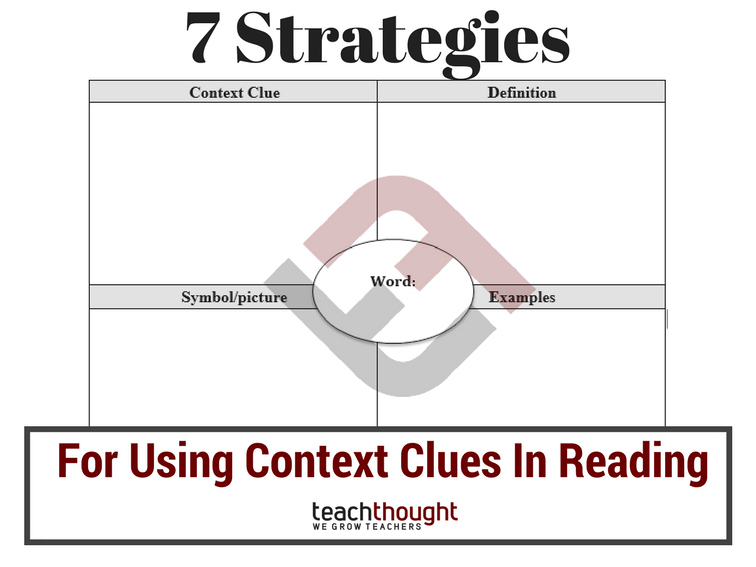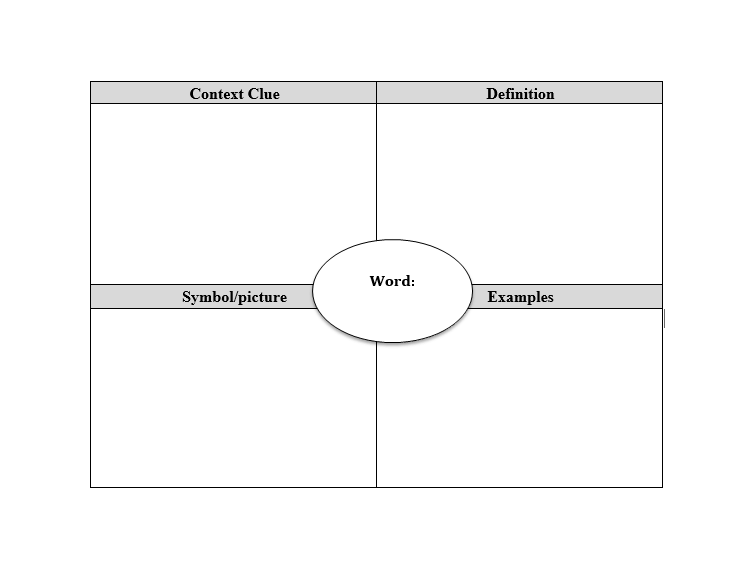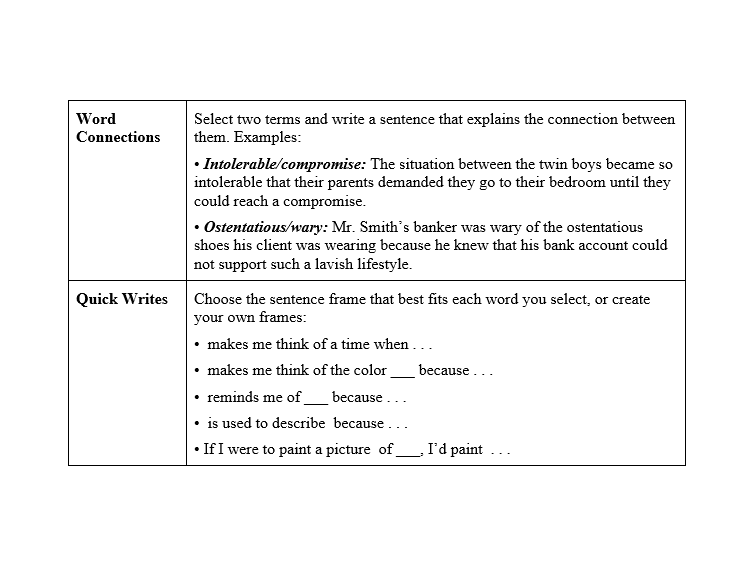

contributed by Kathy Glass
We often ask students to use context indices to understand the meaning of a word. This makes our work as a teacher to explicitly teach how the authors use them.
In doing so, students acquire an inventory of strategies (such as the use of questions of response to reading) to unlock the meaning of unknown words and deepen their global understanding. Without awareness of the types of context indices, students are disadvantaged when they try to determine the meaning independently.
See also 25 reading strategies that work in each content field
The teaching of this skill supports self-agency, allowing students to define unknown words for themselves. Here are the devices that the authors use to incorporate context clues into their writing. The objective is not to memorize each type, but to help students understand that the authors provide clues in many respects – and readers should be alert to these models.
Although the list below seems neat and categorized, remind students to read the entire passage where an unknown word appears. This broader vision helps them to deduce meaning and better understand the surrounding text.
According to research from Beck, McKeown and Kucan (2002), the growth of the vocabulary depends strongly on students who learn to derive from the meanings of the words of the context – not simply to memorize definitions.
7 Strategies for using context indices
1. Word parliaments
The idea: Decompose the word in parts – basic word, prefix and suffix.
Example: Discrimination
- Say-: no, in front of, reversed
- Criminine: Verdict, judgment
- -Thisation: Indicates a name
This ventilation gives an overview of the overall meaning of the word.
2. Definition or explanation
The idea: The sentence may contain a direct explanation or definition.
Examples:
- DiscriminationOr unjustly targeting a group, can cause distress.
- Vulnerable People are often protected by laws that prevent exploitation.
3. Synonymous
The idea: Words close to the unknown term could offer a synonym.
Examples:
- Discrimination Or bias can cause distress.
- People who are vulnerable Or defenseless can avoid damage by remaining alert.
4. Example
The idea: Specific examples help to clarify the meaning.
Examples:
- Like forcing smokers outside, discrimination target an unwanted group perceived.
- Vulnerable People, like children or the elderly, are often protected by law.
5. Antonym or contrast
The idea: Opposite meanings are often introduced with contrast words like contrary to Or as opposed to.
Examples:
- DiscriminationIn contrast to equity, can have harmful effects.
- Vulnerable People, unlike those who can protect themselves, are often targets of damage.
6. Analogy
The idea: Comparisons offer clues to the meaning of words.
Examples:
- Discrimination is like hateful vines wrapping the heart.
- Vulnerable People are like a delicate glass – and in the broken, needing care.
7. Appositive
The idea: An affepositive renown or directly defines a name.
Examples:
- DiscriminationThe act of showing the bias, can harm.
- The elderly and the disabled, a vulnerable groupare protected by law.
Figure A: 4 square graphics organizer


Monitoring: Strengthen the new vocabulary
After identifying the index, guide students in the internalization of the new word by practice and creative use.
Practice sentences
Figure B: short writing tasks options


Use vocabulary pairs in context:
- Intolerable / compromise: The situation between twins has thus become intolerable that their parents insisted to reach a compromise.
- Ostentatious / suspicious: Mr. Smith’s banker was suspicious of the ostentatious Shoes, knowing that his client could not afford such luxury.
Quick writings
Invite students to think about the word with sentence stems:
- ___ It reminds me of a time when …
- ___ It reminds me of the color ___ because …
- If I had to paint a painting of ___I struggled …
Examples and non-examples
For the word: Diversity
Examples:
- A school with students from several cultures
- A work team of various backgrounds
- A catering area with global kitchens
Non-examples:
- The school of a woman entirely
- A management team of a breed or a sex
- Schools separated before civil rights reform
Conclusion: Help the students to help themselves
The authors do not always provide context clues – sometimes they assume that the reader already knows the word. But when the clues are Present and equip students to recognize and use them improves understanding and supports the growth in independent reading.
Teaching students to “read the word” allows them to think critically, to read deeply and to learn continuously.
Adapted from a decoded complex text: how to design lessons and use strategies that target the authentic texts by Kathy T. Glass (ASCD, 2015).
Kathy Glass consults at the national level of schools and districts, presents conferences and teaches seminars for university programs and counties offering personalized professional development. Former teacher, she has been in education for over 25 years and works with administrators and teachers in groups of variable sizes from kindergarten to high school. She is the author of Text Decoded: how to design lessons and use strategies that target authentic texts. Connect with Kathy via its website, www.kathyglassconsulting.com.



